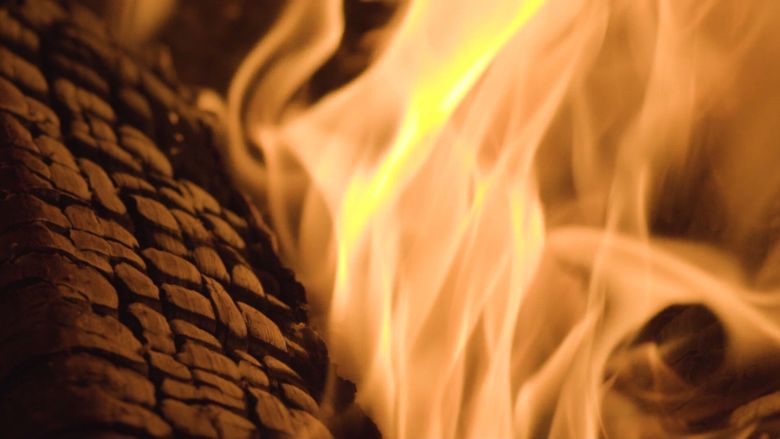Improve combustion

Wood gasifies during combustion and the gases burn with the help of combustion air. Controlling this gasification process is particularly important in terms of emissions. Gasification that is too intense is controlled by adjusting the amount of combustion air, as well as through the size of the pieces of firewood and the load burned at one time.
Good combustion requires sufficient air
Some try to severely limit the supply of incoming air in the hope of recovering more heat. This type of burning with insufficient air saves nothing. Burning with insufficient air covers the fireplace and chimney flue with soot and produces dangerous emissions into the surrounding environment. Burning with insufficient air can be identified by the dark visible smoke.
In traditional fireplaces with grates, the primary air supplied from under the firebox regulates the rate and intensity of the combustion and gasifies the fuel. The combustion of these gases is promoted by the secondary air coming in through the holes in the doors of traditional fireplaces. If the gasification is too intense, the secondary air will not be sufficient for good combustion. In this case, you should reduce the amount of primary air or use larger pieces of firewood.
See if the combustion in the fireplace improves by these means:
- Use small pieces of wood at the beginning and larger ones once the firebox has warmed up. Stacking the wood tightly slows down gasification, while loose stacking accelerates it. Similarly, small pieces of firewood gasify faster than large ones.
- Stack the firewood away from the walls of the firebox. This allows the combustion air to flow around it and form an air curtain around the gasifying fuel.
- If possible, stack the wood horizontally.
- Fill the firebox no more than halfway.
Monitor the smoke to know how well the fireplace is burning
Once the fire is burning nicely, go outside and see what kind of smoke is coming out of the chimney. The colour of the smoke always darkens for a little while when lighting and after adding wood. However, the colour should become lighter within a few minutes. Invisible smoke indicates that the combustion is lower in emissions, but it is not emission-free.
Light or grey smoke during the heating season indicates that things are more or less in order. In summer, the smoke should not be visible at all.
Dark or acrid-smelling smoke indicates that the emissions are high. The reason may be that there is too little air for burning, combustion fumes are being generated to excess, or that the wood is wet. Try and learn using different kinds of firewood loads, ways of stacking the wood or air supply settings to see if you can reduce the amount of visible smoke.
See if you can make the smoke colourless, and thus low in emissions, with these tips:
- Take out any old ashes.
- Use dry wood, not wet or unseasoned wood.
- Do not burn rubbish of any kind.
- Light the wood-burning sauna stove quickly. Use the driest wood for kindling. If necessary, you can use fire starter sticks. Burn wood in several batches. Start with small pieces of wood. Add the second load only when the flames die down. Adjust the air coming from under the grate and through the doors.
- In a heat-storing fireplace, light the wood from the top. Fill the firebox no more than halfway.
- Take care of regular chimney sweeping.